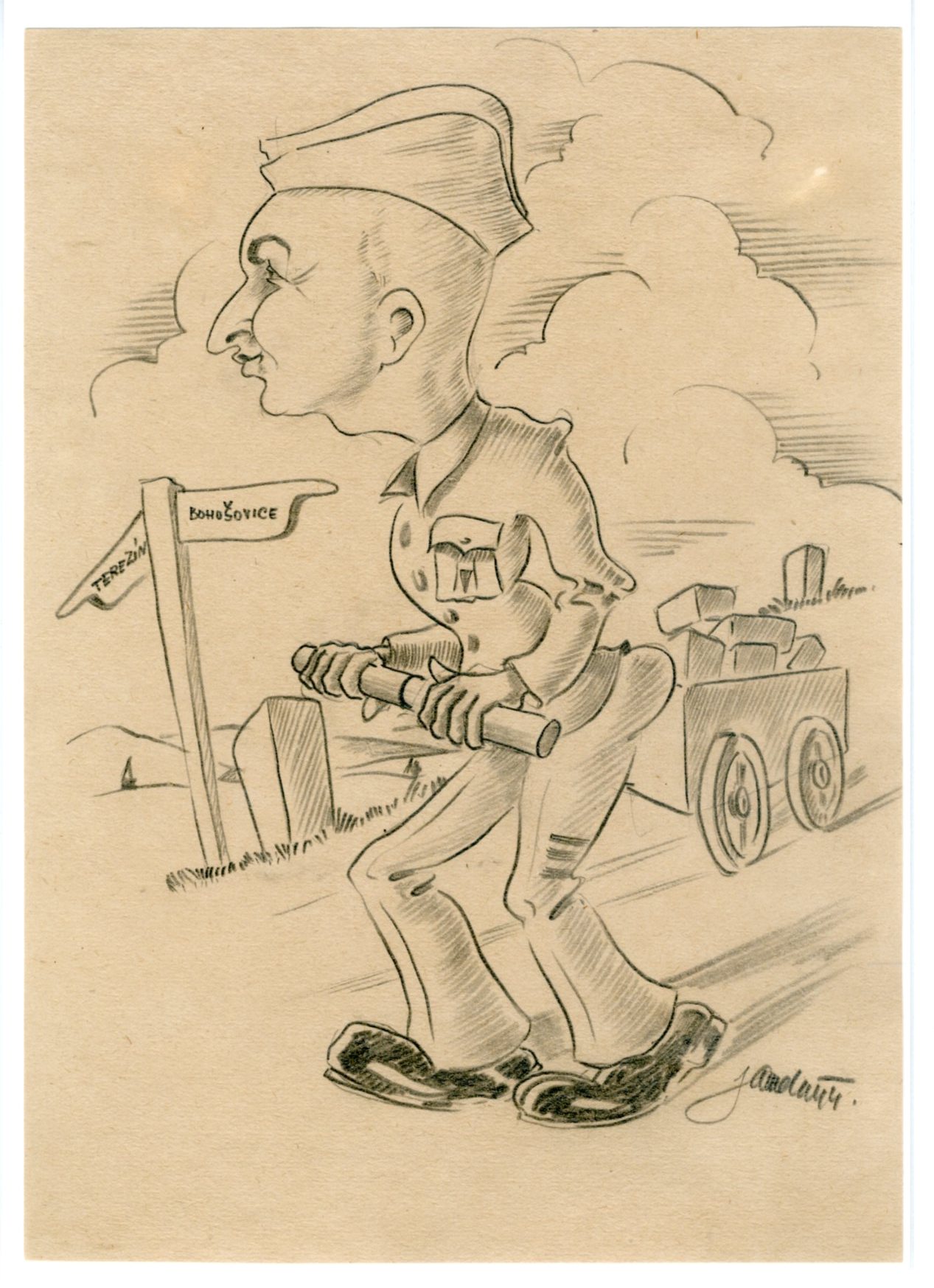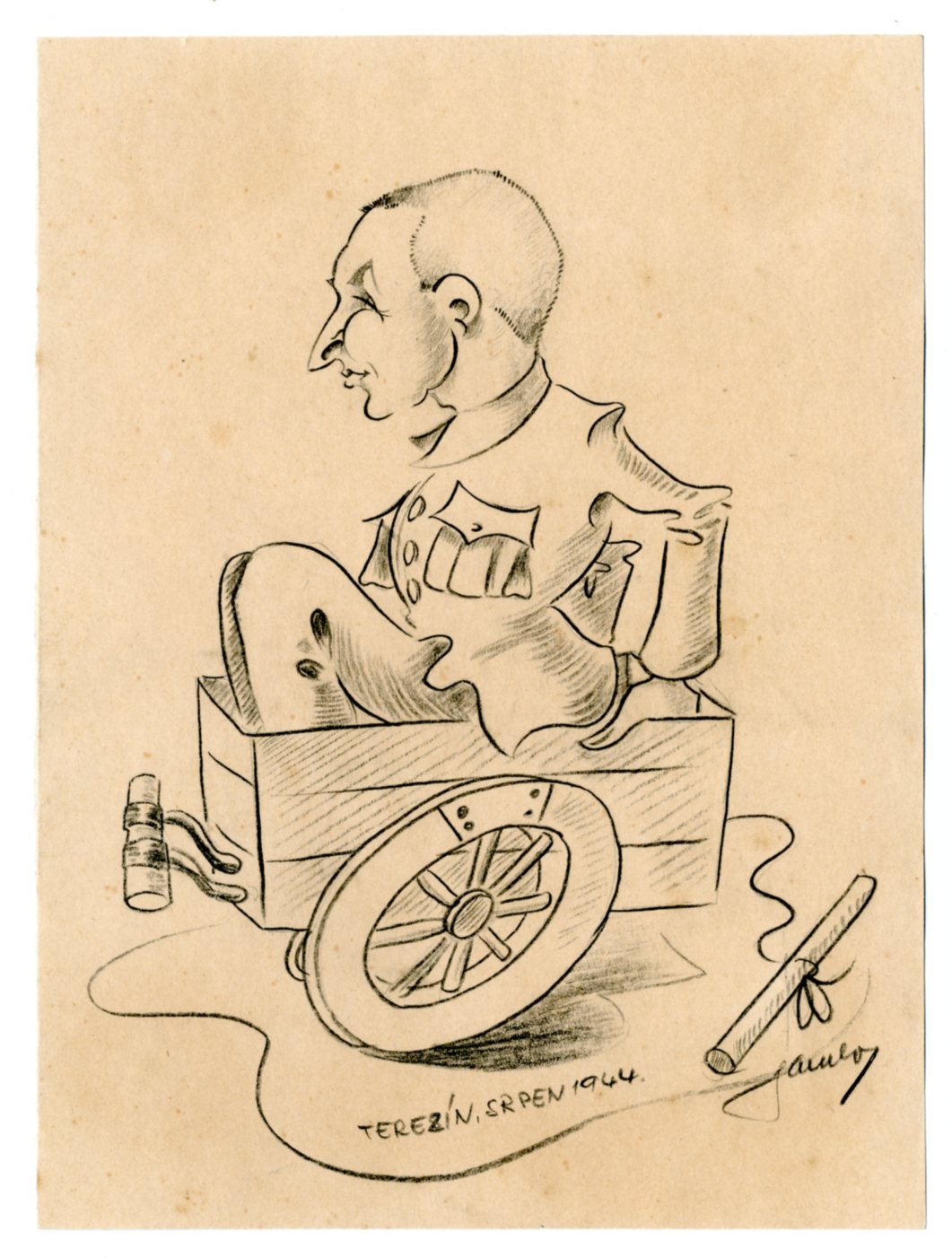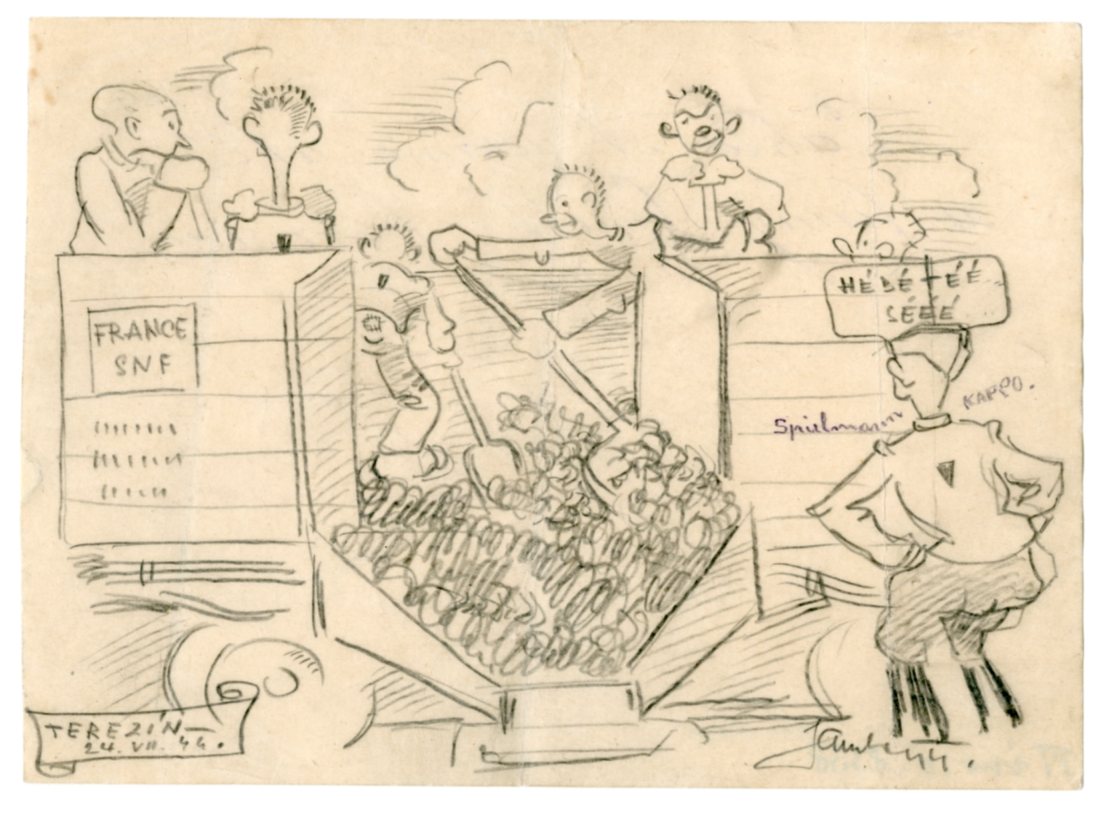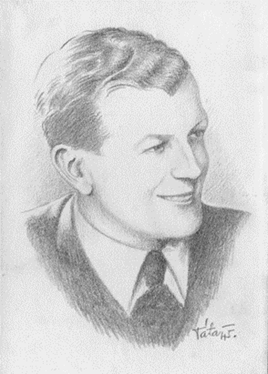, Josef Koenigsmark (poem), Sputh – poem with a drawing of inmates unloading coal, Small Fortress Terezín, 1944, 21 x 14.8 cm, PT 8339.jpg)


, 1972, pencil, paper, 32.8 x 24 cm, PT 6779.jpg)


In the Police Prison, Bohumil Janda was assigned to Cell No. 6 in the First Courtyard. Initially, he worked in the Sputh commando, which unloaded coal from trains to boats in Lovosice. In August 1944, he was reassigned from this hard and challenging work to an administrative office (Geschäftszimmer), as the manager of the so-called Effektenraum. He was also moved to live in cell. No. 13. The devastating living conditions in the Small Fortress did not break Bohumil Janda’s spirit to such an extent as to abandon his passion for drawing. After all, he had pursued artwork earlier in his life, drawing, for instance, caricatures of athletes for newspapers. In prison, he secretly made some 50 pen drawings, primarily on toilet paper. These were mostly caricatures of his fellow inmates; some are now part of the Terezín Memorial collection.
Bohumil Janda spent less than three months in Terezín. On October 5, 1944, he and other inmates from Pilsen were deported to the German town of Zwickau. He was kept in a remand facility situated next to the penitentiary. His prison job was gluing paper bags. In addition, he also performed occasional bookbinding and scribing jobs for the local clerks, painting and drawing portraits and designing diplomas, congratulation cards, and other written documents. This earned him better treatment from the prison wardens. Meanwhile, he underwent questioning by an investigating judge. Only several months later, in March 1945, he was sent to a court in the Waldheim penitentiary and tried on April 12, 1945. He was sentenced to 10 years for conspiring to commit high treason against the Reich, abetting the enemy, and wartime espionage. The end of the war came for Bohumil Janda very soon afterward; he was liberated on May 9, 1945.